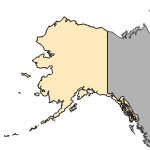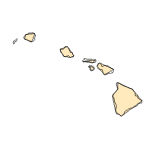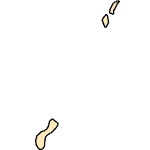Cichla temensis
(speckled pavon)
Fishes
Exotic |
|
Common name: speckled pavon
Synonyms and Other Names: banded peacock cichlid, speckled peacock bass, tucunare pinema, striped tucunare, royal pavon, painted pavon, pavon lapa
Taxonomy: available through
www.itis.gov
Identification: Taphorn and Barbarino-Duque (1993) provided distinguishing characteristics and a key to a few Cichla species, including C. temensis. A more recent review of the genus, with descriptions of nine new species, was published by Kullander and Ferreire (2006). A color photograph of C. temensis, or of a closely related form, appeared in Axelrod (1993) and on FishBase.
Size: 99 cm TL.
Native Range: Tropical America. Widespread in clear and black waters of Rio Negro and Orinoco basin, and in Central Amazon of South America (Kullander 1986).



|

Alaska |

Hawaii |

Puerto Rico &
Virgin Islands |

Guam Saipan |
Hydrologic Unit Codes (HUCs) Explained
Interactive maps: Point Distribution Maps
Nonindigenous Occurrences:
Table 1. States with nonindigenous occurrences, the earliest and latest observations in each state, and the tally and names of HUCs with observations†. Names and dates are hyperlinked to their relevant specimen records. The list of references for all nonindigenous occurrences of Cichla temensis are found here.
Table last updated 12/9/2025
† Populations may not be currently present.
Means of Introduction: Stocked by state agencies for as a sport fish. The Florida stocking reportedly involved only 110 fish, the last of which were released in 1988 (Larsen 1993).
Status: Species successfully overwintered at least two years in south Florida canals, but it is apparently considered to be extirpated in Florida because it was not listed in a recent listing of non-native species (Shafland et al. 2008). Some Cichla populations in Texas survived and reproduced for a brief period, but by 1992 all fish had died. Cichla species are unable to survive cold winters, and evidence indicates fish in one Texas reservoir also succumbed to high summer temperatures (Garrett 1982; Howells and Garrett 1992).
Impact of Introduction: Unknown. In their native habitats, members of this genus are diurnal piscivores that consume a variety of prey (Winemiller et al. 1997).
References: (click for full references)
Axelrod, H. R. 1993. The most complete colored lexicon of cichlids. Tropical Fish Hobbyist Publications, Inc., Neptune City, NJ.
Garrett, G. P. 1982. Status report on peacock bass (Cichla sp.) in Texas. Presented at the Annual Proceedings of the Texas Chapter, American Fisheries Society.
Howells, R. G., and G. P. Garrett. 1992. Status of some exotic sport fishes in Texas waters. Texas Journal of Science 44(3):317-324.
Kullander, S. O. 1986. Cichlid fishes of the Amazon River drainage of Peru. Swedish Museum of Natural History, Stockholm, Sweden. 431 pp.
Kullander, S.O. 2003. Cichlidae (Cichlids). p. 605-654. In R.E. Reis, S.O. Kullander and C.J. Ferraris, Jr. (eds.). Checklist of the Freshwater Fishes of South and Central America. Porto Alegre: EDIPUCRS, Brasil.
Kullander, S.O. and E.J.G. Ferreira. 2006. A review of the South American cichlid genus Cichla, with desciptions of nine new species. Ichthyological Exploration of Freshwaters 174(4): 289-398.
Larsen, L. 1993. Peacock bass explosions! Larsen's Outdoor Publishing, Lakeland, FL. 192 pp.
Shafland, P.L., K.B. Gestring, and M.S. Sanford. 2008. Florida's exotic freshwater fishes--2007. Florida Scientist 71: 220-245.
Taphorn, D. C., and A. Barbarino-Duque. 1993. Evaluación de la situación actual de los pavones, (Cichla spp.), en el Parque nacional Capanaparo-Cinaruco, Estado Apure, Venezuela. Natura 96:10-25.
FishBase Summary
Author:
Leo Nico, and Bill Loftus
Revision Date: 7/10/2012
Peer Review Date: 7/10/2012
Citation Information:
Leo Nico, and Bill Loftus, 2025, Cichla temensis Humboldt in Humboldt and Valenciennes, 1821: U.S. Geological Survey, Nonindigenous Aquatic Species Database, Gainesville, FL, https://nas.er.usgs.gov/Queries/FactSheet.aspx?SpeciesID=438, Revision Date: 7/10/2012, Peer Review Date: 7/10/2012, Access Date: 12/10/2025
This information is preliminary or provisional and is subject to revision. It is being provided to meet the need for timely best science. The information has not received final approval by the U.S. Geological Survey (USGS) and is provided on the condition that neither the USGS nor the U.S. Government shall be held liable for any damages resulting from the authorized or unauthorized use of the information.